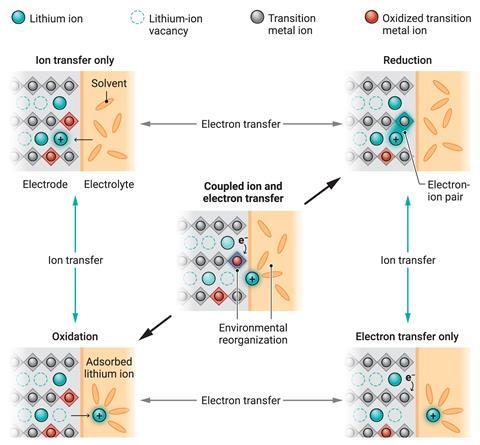**Transforming Lithium-Ion Battery Models with Integrated Ion-Electron Transfer Dynamics**
An innovative research project undertaken by scholars from the Massachusetts Institute of Technology (MIT) unveils fresh perspectives on the mechanisms underlying lithium-ion battery charging and discharging. By proposing a model that integrates both electron and lithium ion transfers, this work contests conventional beliefs and marks a substantial advancement in enhancing battery efficiency.
**The Intricacies of Intercalation in Rechargeable Batteries**
Lithium-ion batteries have established themselves as essential sources of power for electronic devices globally. Their functionality depends on a phenomenon known as intercalation, where lithium ions are alternately inserted and extracted from the interstitial spaces between atomic layers of layered electrodes. Yet, despite their common usage, the complex dynamics of this mechanism have remained difficult to comprehend.
In the past, researchers posited that the flow of current in these batteries was mainly limited by the velocity of lithium ion migration between a battery’s electrolyte and its electrode. This belief led to the employment of the Butler–Volmer equation, which proposes an exponential correlation between current and overpotential, albeit lacking a robust microscopic justification.
**A Fresh Insight: Integrated Ion-Electron Transfer**
In a groundbreaking 2021 investigation, MIT’s Martin Bazant, in collaboration with Yang Shao-Horn and other associates, introduced a revolutionary concept of integrated ion–electron transfer. Their model posits that the actual rate-limiting factor is the solid electrode’s capacity to promote electron transfer reactions with solvated ions—challenging the dominant focus on the Butler–Volmer equation.
Their findings significantly indicated that this method more precisely captures the charging and discharging dynamics of lithium iron phosphate, a cathode material recognized for its thermal stability, in contrast to the traditional lithium cobalt oxide.
**Consequences for Various Cathode Materials**
In their recent research, Bazant and Shao-Horn broadened their investigation to encompass a variety of well-known cathode materials, including nickel manganese cobalt and lithium cobalt oxide. Despite the high electrical conductivity of these materials, predictions informed by integrated ion–electron transfer consistently outperformed those derived from the Butler–Volmer framework.
Bazant’s team discovered that the analyzed battery materials naturally excel at ion transfer, underscoring the importance of factoring in electron transfer into models. Their discoveries are anticipated to profoundly affect future battery development and optimization.
**Towards Improved Battery Interfaces Through Sophisticated Modeling**
The consequences of these discoveries go beyond mere theoretical interest. The newly clarified effects arising from changes in counteranion and electrolyte makeup propose avenues for enhanced battery efficacy. The foundational principles of the integrated ion–electron transfer model provide a basis for deliberate electrode material innovation.
Bazant stresses that this mathematical model connects observed reaction rates with the microscopic properties of materials, which may be calculable through quantum and molecular simulations. This relationship signals the dawn of a new phase in engineered battery interfaces.
**A Bright Future for Battery Technology**
Within the scientific community, the ramifications of these findings are evident. Alexander Urban, a computational materials scientist, underscores the significance of this research in refining models of intercalation processes. Acknowledging the dual roles of ion and electron transfers enables more precise simulations and raises important inquiries regarding possible inaccuracies in prevailing models.
By deepening the understanding of these essential processes, the research conducted by Bazant and his team not only contests existing frameworks but also facilitates the development of pioneering strategies for battery technology, ensuring ongoing progress in energy storage solutions.
